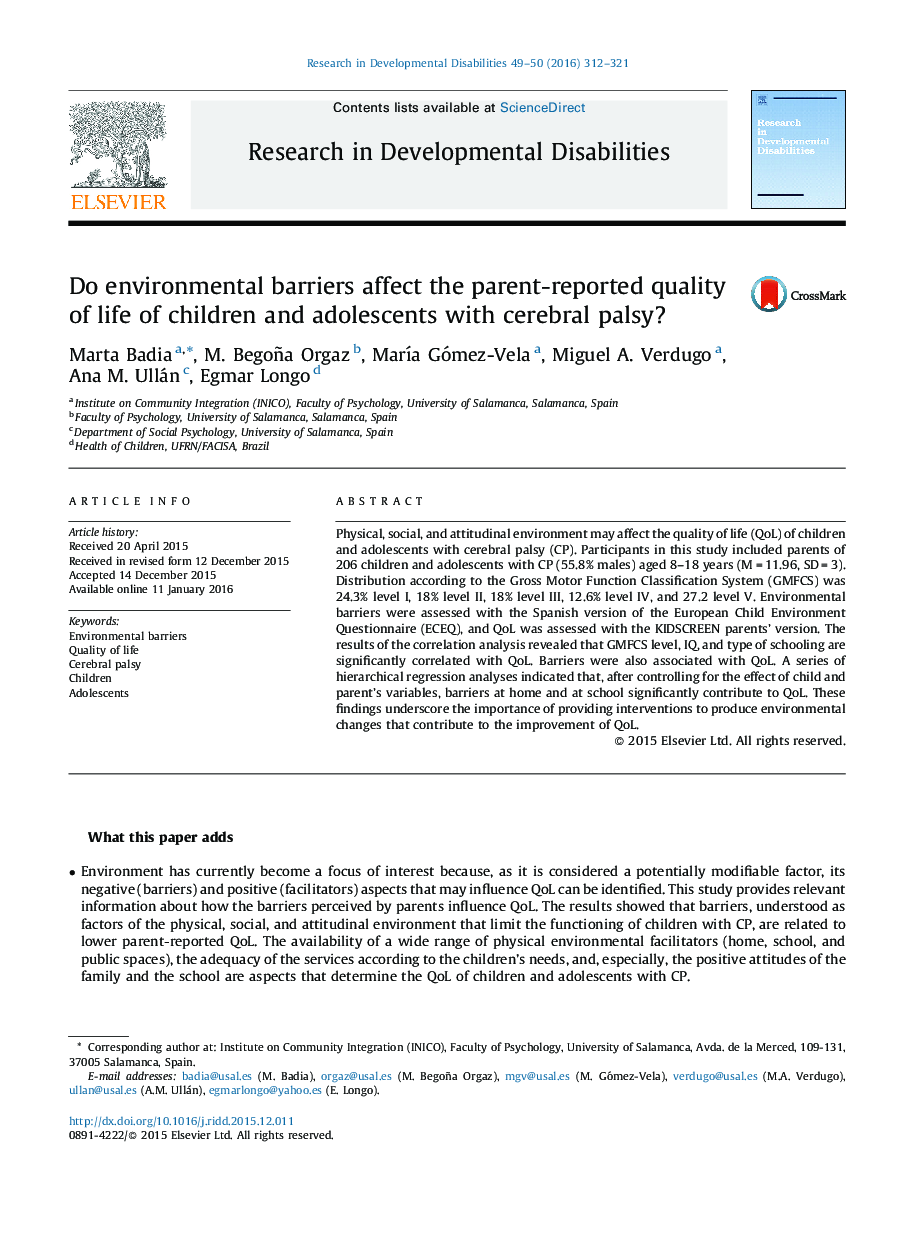| Article ID | Journal | Published Year | Pages | File Type |
|---|---|---|---|---|
| 371066 | Research in Developmental Disabilities | 2016 | 10 Pages |
•Currently, models for children and adolescents with CP focus on environmental factors and their impact on QoL.•IQ and level of gross motor function predicted QoL.•Environmental barriers informed by parents predict their children's QoL.•Improving attitudes at home and school may promote QoL of children and adolescents with CP.
Physical, social, and attitudinal environment may affect the quality of life (QoL) of children and adolescents with cerebral palsy (CP). Participants in this study included parents of 206 children and adolescents with CP (55.8% males) aged 8–18 years (M = 11.96, SD = 3). Distribution according to the Gross Motor Function Classification System (GMFCS) was 24.3% level I, 18% level II, 18% level III, 12.6% level IV, and 27.2 level V. Environmental barriers were assessed with the Spanish version of the European Child Environment Questionnaire (ECEQ), and QoL was assessed with the KIDSCREEN parents’ version. The results of the correlation analysis revealed that GMFCS level, IQ, and type of schooling are significantly correlated with QoL. Barriers were also associated with QoL. A series of hierarchical regression analyses indicated that, after controlling for the effect of child and parent's variables, barriers at home and at school significantly contribute to QoL. These findings underscore the importance of providing interventions to produce environmental changes that contribute to the improvement of QoL.
